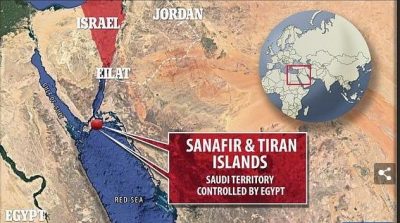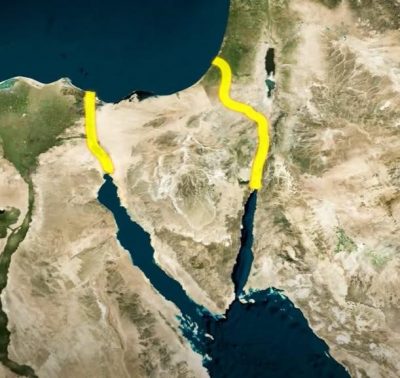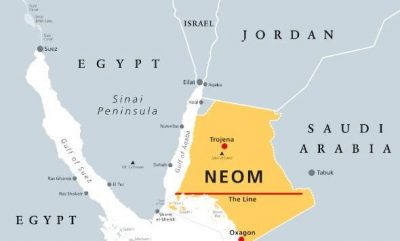The purely economic aspect of the war to annihilate Gaza and wipe it out of existence, and Arab and international preparations for The Ben Gurion Canal Project
The Ben Gurion Canal Project, sometimes referred to as the Israeli or Palestinian Canal, has emerged as an Israeli transformative and ambitious initiative in the realm of global infrastructure development. This proposed canal aims to create a new waterway through the occupied Palestinian territories-Israel, connecting the Red Sea to the Mediterranean, effectively becoming a competitor to Egypt’s world-renowned Suez Canal. In this article, we delve into the key aspects of this project and its potential effects on the annihilation and destruction of Gaza.
Since the beginning of these operations in Gaza as a response to Hamas’ operations to cross the occupied territories and settlements, several logical questions have arisen: How was Hamas able to carry out this intrusion, with the advances in security, intelligence, and technology that the occupation is equipped with? How were they able to cross the checkpoints? How were they not picked up by the radars? All of these questions refer to an internal Mossad operation that instigated or planned this operation in order to unleash a plan to completely destroy the Gaza Strip and evacuate its population, which was prepared in advance.
The question that often prevented us from continuing with these inquiries was about the feasibility and benefit of the Israeli occupation of this sacrifice to its abode. In fact, doubt dissipates if the economy is thrown into the balance. Everyone knows how the economy and profit cause wars and how they play a major role in fueling them. In these ongoing operations, the economy takes the lead over the event and is most prominent. Its problems come through the Ben Gurion Canal Project.
The Ben Gurion Canal Project
The Ben Gurion Canal Project, sometimes referred to as the Israeli or Palestinian Canal, it has emerged as a transformative and ambitious initiative of the Israeli occupation in the field of global infrastructure development. This proposed canal aims to create a new waterway through Israel, connecting the Red Sea to the Mediterranean, effectively becoming a competitor to Egypt’s world-renowned Suez Canal. In this article, we delve into the main aspects of this project and its potential effects on global trade and geopolitics, which may be a reason and motivation for these ferocious attacks on the Gaza Strip.

The Ben Gurion Canal Project
The proposed Ben Gurion Canal is envisioned to span approximately 293 kilometers in length, making it nearly one-third longer than the existing Suez Canal which is 193.30 km long. This ambitious project is named after Israel’s founding father and first prime minister, David Ben-Gurion, and seeks to address the various challenges that have plagued the Suez Canal over the years, including the blockage and prolonged closure, as the occupation claims. However, at its inception, the project was facing problems, including difficulties in the canal Drilling and freedom access and navigation for the Israeli occupation in the waters of the Gulf of Aqaba and the Red Sea, and the most important is the location of the Gaza Strip, which poses a security threat, as do these facilities, which will be an economic artery for the occupation.
The Canal Drilling
Given the substantial distance between the Mediterranean Sea and the port of Eilot in the Gulf of Aqaba, along with the need to accommodate ships and tankers of all sizes, excavating this passage is a formidable, expensive, and long-term endeavor. However, the United States proposed a solution to address these challenges: the use of 590 nuclear bombs. The cost of digging the canal was $575 million when the proposal was submitted in 1963, with an estimated increase to $5 billion in 2021, as detailed in the declassified memorandum from the 1960 proposal the declassified memorandum.
Israel’s Access to the Red Sea – The case of Tiran and Sanafir
The establishment of the water canal along the region’s previous borders since the occupation in 1948 would have posed numerous the Israeli canal, encompassing international border issues and the laws governing territorial waters. Eilot Port, situated in the northernmost part of the Gulf of Aqaba, to the south of the occupied Palestinian territories, emerges as the occupation’s most vital and strategically significant port and one of the main gateways for entrance and exit to the Red Sea in the event of the canal’s completion.

Tiran and Sanafir
The two islands, situated at the southern end of the Gulf of Aqaba, have been a persistent source of controversy regarding their ownership. Are they Saudi or Egyptian territory? Given their ownership’s impact on territorial waters in the region, Egypt employed them as a strategic tool in its conflicts with the Israeli occupation. King Farouk closed access to these islands for Israel, leading to the United States and France assuming control in support of Israel, acknowledging the islands’ strategic significance.
Egypt transferred ownership of the islands to Saudi Arabia with American mediation, driven by the prominent focus on Israel’s interests and the process of normalization with it. This led to the redefinition of the borders between Saudi Arabia and Egypt, encompassing the islands and Sinai, in order to establish a secure corridor in compliance with territorial waters laws. This arrangement would legally permit Israel’s passage into the Red Sea without having to navigate the complexities of both countries’ laws. Consequently, it almost eliminated the obstacle to Israel’s free access to the Red Sea.
Costs of the Israel Canal and the location of the Gaza Strip
As mentioned earlier, the planned water canal is one-third longer than the Suez Canal and encounters challenging mountainous terrain, which increases the cost of excavation and infrastructure development. Additionally, it faces security challenges due to its proximity to the Gaza Strip, where the Palestinian resistance operates.

The Israeli Canal and Suzie Canal
The Israeli occupation believes that eliminating the Gaza Strip entirely and relocating its population, or coercing them to seek refuge in Egypt, will address both their financial and security challenges. The complete removal of the Gaza Strip and its integration into the occupied territories would ensure the occupation a direct and shorter route from the Gulf of Aqaba to the Mediterranean Sea. This route would align with the current sector where the canal’s outlet to the Mediterranean is situated
The Israeli occupation believes that the complete removal of the Gaza Strip, along with relocating its population – possibly by coercing them to seek refuge in Egypt – would help address both their financial and security challenges. Integrating the Gaza Strip into the occupied territories would create a direct and shorter route from the Gulf of Aqaba to the Mediterranean Sea, This approach not only reduces construction costs, shortens the construction duration, and simplifies the work process but also alleviates security concerns associated with eradicating the population of Gaza By making the outlet in the current location of Gaza itself.

Israeli canal through Gaza
Neom City: the construction of a new mega city in Saudi Arabia
At the proposed entrance to a planned Israeli water canal, the Kingdom of Saudi Arabia views the location as ideal for the NEOM Tech City project, which is situated in the northwest region of the country. The project includes the Line City, extending from the northern desert to the Gulf of Aqaba, along the route of the proposed canal.

The alignment of Saudi and occupation projects, combined with Egypt’s surrender of its strategic islands through American mediation, diminishes suspicions of coincidence. What is currently occurring in Gaza is part of the plan, whether approved by all parties involved or not. Western support and its justifications for the Gaza crisis don’t lack any discernible long-term financial or economic motive.
The plan to compel the residents of Gaza to flee to Egypt and evacuate the Strip is no longer secret or mere speculation, following the leaks published by WikiLeaks regarding the Israeli Minister of Intelligence’s proposal to enforce the relocation of Gaza’s inhabitants to Egypt, This is the rationale behind Israel’s ruthless targeting of Gaza’s entire population, regardless of age or the refugees’ health conditions in the camps. It also explains its widespread and brutal destruction of the Strip’s infrastructure and housing, in addition to its use of internationally prohibited gases.
END
By Abdillahi Gaboose | X: @guntigaab | Email: gaboose16@gmail.com
We welcome the submission of articles and opinion pieces for possible publication on Daljir Media. Opinions expressed on Daljir published articles are those of the author and do not necessarily reflect the views of Daljir Media


COMMENTS
[…] di resuscitare un piano rimasto accantonato dagli anni ’60. Il piano in questione è il Ben Gurion Canal Project, un’impresa che costituirebbe un rivale del Canale di Suez, attualmente controllato […]